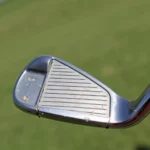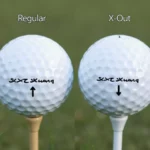When it comes to golfing, choosing the right driver can significantly impact your game. But like any piece of sports equipment, drivers wear out over time. So, how often should you replace your driver? In this guide, we’ll explore the signs that indicate it’s time for a new driver, factors that affect longevity, and expert recommendations for finding the best fit for your game.
Understanding Your Driver
Your driver can be the most critical club in your bag. It’s designed to hit the ball the farthest and create an impactful first strike. However, with regular use, drivers can suffer from wear and tear. Modern drivers are constructed from advanced materials, but they still require care and attention.
Factors Affecting Driver Longevity
Several factors will influence how long your driver lasts:
- Frequency of Use: If you play golf regularly, your driver will likely wear out faster than if you only hit the course occasionally.
- Playing Conditions: Courses with harder surfaces or extreme weather conditions can accelerate wear.
- Swing Technique: An incorrect swing can create undue stress on the clubface, while a consistent and smooth swing can prolong the life of your driver.
- Type of Ball: Harder golf balls can wear down the face of the driver faster than softer balls.
Signs It’s Time to Replace Your Driver
While the lifespan of a driver can vary, there are some clear indicators that it’s time for an upgrade. Consider the following signs:
- Increased Hooks/Slices: If you’re frequently battling with errant shots, your driver might need replacing.
- Loss of Distance: If your drives aren’t traveling as far as they used to, it might be time for a new one.
- Visible Wear: Look for significant scratches, nicks, dents, or a shiny appearance where the clubface has lost its grit.
- Inconsistent Shots: If you’re experiencing inconsistency in your drives, sometimes hitting the fairway and other times losing it completely, your driver could be at fault.
How Long Does a Driver Last?
On average, a driver can last from 2 to 5 years, but this is highly dependent on the factors noted above. Here’s a more detailed breakdown:
| Usage Frequency | Estimated Lifespan |
|---|---|
| Daily Player | 2 years |
| Weekly Player | 3-4 years |
| Occasional Player | 4-5 years |
When to Consider New Technologies
Golf technology is constantly evolving, and newer models promise better performance, increased distance, and improved forgiveness. Here are some factors that may influence your decision to upgrade:
- Distance Enhancements: Newer models often incorporate technologies that help maximize distance, such as adjustable weights and improved aerodynamics.
- Customization Options: More recent drivers allow for greater custom fitting to match your swing speed and style, enhancing your game.
- Improved Materials: Look for advancements such as carbon fiber and advanced face materials that can enhance performance and provide better feedback.
How to Choose the Right New Driver
If you’ve decided it’s time for a new driver, here are some tips to help you choose:
- Get Fitted: Consult a professional to help find a driver that fits your swing style, speed, and level of play.
- Consider the Loft: Understand your swing speed and ball flight — loft greatly influences how high and far you hit the ball.
- Check the Shaft Flex: A driver with the right shaft flex can make a significant difference in performance. Choose between:
- Regular
- Stiff
- Extra Stiff
- Test Different Models: Don’t settle on the first driver you see. Try a variety of models to see what feels best.
Key Takeaways
- Drivers generally need replacing every 2-5 years, depending on usage.
- Signs to replace include errant shots, loss of distance, and visible wear.
- Newer driver technologies can enhance performance and improve your game.
- Custom fitting is crucial in choosing the right driver for your style.
FAQ Section
1. How often should I replace my driver?
Generally, every 2 to 5 years, depending on your frequency of play and performance issues.
2. What are the signs that my driver needs replacing?
Look for decreased distance, increased hooks or slices, visible wear, and inconsistencies in shot performance.
3. Do golf drivers lose performance over time?
Yes, drivers can lose their effectiveness due to wear and surface damage, affecting distance and accuracy.
4. Should I invest in a new driver every season?
It is typically unnecessary, but if you notice significant changes in your game, it could be worth considering.
5. What are the benefits of newer driver technology?
New models often provide better distance, improved forgiveness, and customization options.
6. How can I determine the right driver loft for my swing?
Consult with a professional fitter who can analyze your swing and recommend the appropriate loft.

